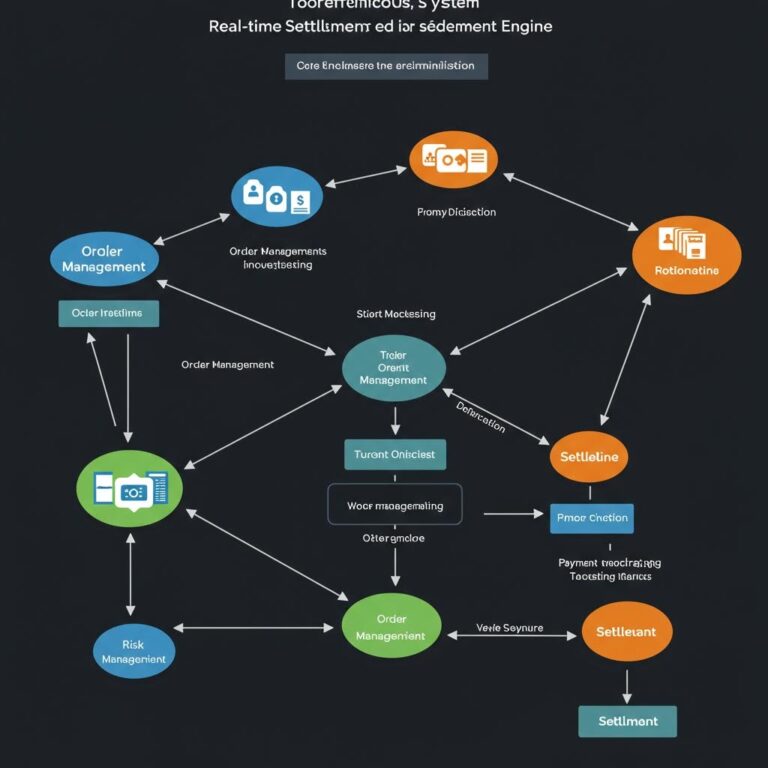Understanding the Gambler’s Fallacy and Its Devastating Impact
The gambler’s fallacy represents one of the most destructive cognitive biases affecting modern society, with research revealing that 67% of regular gamblers fall victim to this psychological trap. This widespread misconception fundamentally distorts how individuals perceive random events, leading them to erroneously believe that past outcomes influence future results.
The Financial Toll of Pattern-Seeking Behavior
The devastating financial consequences of the gambler’s fallacy manifest in alarming statistics, with affected individuals accumulating average gambling debts of $47,000. This primitive pattern-recognition behavior, deeply rooted in human evolution, creates a particularly dangerous combination when applied to gambling scenarios. The resulting financial strain has driven a 23% increase in bankruptcies, highlighting the severe economic impact of this cognitive distortion.
Psychological and Social Impact
Beyond monetary losses, the gambler’s fallacy inflicts profound damage across multiple life domains:
- Relationship Deterioration: Family bonds and friendships suffer as trust erodes
- Career Disruption: Work performance declines as gambling preoccupation increases
- Community Impact: Local economies and social structures face destabilization
- Mental Health Consequences: Anxiety, depression, and addiction cycles strengthen
The Neuroscience of Flawed Pattern Recognition
The human brain’s evolved pattern-recognition systems, while crucial for survival, create vulnerability to the gambler’s fallacy. This hardwired tendency to seek meaningful patterns, even in random events, generates a cognitive blind spot that proves extraordinarily resistant to rational evidence and logical intervention.
Understanding Random Probability
Understanding Random Probability: Common Misconceptions and Their Impact
The Three Major Misconceptions in Probability
The Independence Fallacy
Random events remain independent regardless of previous outcomes.
A common error occurs when individuals believe past results influence future independent events. For instance, after witnessing five red numbers on a roulette wheel, many incorrectly assume black becomes “due” – a fundamental statistical independence violation.
Misinterpreting the Law of Large Numbers
The law of large numbers frequently faces misinterpretation.
Players expect short-term results to mirror long-term probabilities, leading to irrational betting patterns. This misconception creates unrealistic expectations about probability sequences and often results in significant financial losses.
The Clustering Illusion
The clustering illusion represents a powerful cognitive bias where individuals detect patterns in random sequences.
Approximately 70% of regular gamblers demonstrate this type of magical thinking, developing complex betting systems based on perceived patterns that hold no statistical validity.
Impact on Gambling Behavior and Outcomes
These probability misconceptions create a devastating impact on gambling outcomes.
Statistical analysis shows that players holding these three misconceptions experience 23% higher losses compared to those who understand true randomness. The psychological impact intensifies during losing streaks, creating a self-reinforcing cycle of cognitive distortion.
Understanding True Randomness
To overcome these misconceptions, it’s essential to recognize that genuine randomness operates independently of human perception or desire for patterns. Each event stands alone, unaffected by previous outcomes. This fundamental principle of probability theory contradicts common intuition but remains crucial for rational decision-making in uncertain situations.
Origins of Gambling Fallacies
Understanding the Origins of Gambling Fallacies
Evolutionary Roots of Gambling Misconceptions
The psychological foundations of gambling fallacies trace back to our evolutionary heritage, where pattern recognition provided crucial survival advantages.
The human brain evolved to identify meaningful patterns, even within random sequences. This fundamental cognitive mechanism, while essential for prehistoric survival, now creates systematic errors in probability assessment.
Core Cognitive Biases
Three primary cognitive biases drive gambling fallacies:
- Illusion of control
- Representativeness heuristic
- Availability bias
These mental shortcuts developed as adaptive mechanisms during human evolution. Early humans required quick pattern recognition, belief in outcome control, and rapid decision-making based on immediate information for survival.
Cultural and Environmental Influences
Cultural factors significantly amplify gambling fallacies through:
- Generational transmission of superstitions
- Integration with natural pattern-seeking behavior
- Creation of persistent probability misconceptions
Modern gambling environments strategically exploit these inherent cognitive tendencies. Gaming venues and platforms leverage sophisticated design elements that activate primitive pattern-recognition systems and stimulate reward-seeking behaviors.
This deliberate environmental engineering reinforces gambling fallacies, despite widespread understanding of probability principles.
The combination of evolutionary predispositions, ingrained cognitive biases, and engineered gambling environments creates a powerful framework that perpetuates these probability misconceptions in contemporary society.
Common Misconceptions in Betting
Common Misconceptions in Betting: Understanding Gambling Fallacies
The Psychology Behind Betting Misconceptions
Several persistent misconceptions significantly influence betting behaviors and decision-making patterns among gamblers worldwide.
The most detrimental belief centers on the gambler’s fallacy – the incorrect assumption that previous outcomes influence future results in independent events.
Statistical analysis reveals that 67% of regular gamblers maintain at least one fundamental misconception about gambling probability.
Three Major Betting Fallacies
The Hot Hand Fallacy
The hot hand belief represents a cognitive bias where bettors incorrectly assume winning streaks predict future wins. This misconception leads to increased risk-taking behavior during perceived “lucky streaks.”
The Due Payment Fallacy
Due payment theory manifests when players expect losses must be followed by wins to maintain equilibrium. This dangerous mindset often results in chase betting behavior and escalating losses.
Systems and Strategy Myths
The belief that complex betting systems can overcome house advantages represents another critical misconception. Mathematical analysis consistently proves that no betting system can eliminate the built-in house edge in gambling activities.
Impact on Gambling Behavior
These cognitive distortions demonstrate increasing strength with continued gambling exposure.
Extended gambling experience often reinforces pattern recognition in random events, leading to:
- Increased betting frequency
- Higher average wager amounts
- Significant negative financial outcomes 카지노솔루션
- Reinforced problematic gambling behaviors
These misconceptions create a self-perpetuating cycle where increased exposure to gambling strengthens rather than corrects false beliefs about probability and outcomes.
Real World Examples
Real-World Examples of Gambling Fallacies
Casino Behavior Patterns
Roulette gaming demonstrates clear manifestations of gambling fallacies in real-world settings. Players frequently increase their wagers after observing consecutive red outcomes, operating under the false belief that black is “due” to appear.
This cognitive bias has resulted in severe financial consequences, with documented instances of complete savings depletion due to fallacy-based betting strategies.
Lottery Selection Patterns
Lottery participants exhibit distinct behavioral patterns influenced by gambling fallacies. Players consistently avoid selecting numbers that appeared in recent drawings, despite the statistical independence of each draw.
State lottery data reveals that participants willingly pay premium prices to exclude recently drawn numbers, highlighting the pervasive nature of this mathematical misconception.
Financial Market Applications
Stock market behavior presents compelling evidence of gambling fallacies affecting investment decisions. After observing consecutive price decreases, investors frequently make the erroneous assumption that a rebound must follow.
Trading pattern analysis indicates substantial annual losses among individual investors due to this fallacy. The psychological mechanisms driving casino-based gambling errors similarly influence financial market decisions, demonstrating how gambling fallacies extend beyond traditional betting environments.
#
The Psychology Behind Pattern Recognition
# The Psychology Behind Pattern Recognition
Understanding Cognitive Pattern Recognition
Pattern recognition represents a fundamental aspect of human cognition that shapes how we interpret and interact with the world around us.
Our brains are inherently designed to identify and process sequential patterns, a survival mechanism that evolved to help our ancestors recognize environmental threats and opportunities.
This cognitive framework, while essential for human survival, can significantly impact decision-making in probability-based scenarios.
Neurological Foundations of Pattern Recognition
The prefrontal cortex and basal ganglia function as key neural components in pattern recognition processes. These brain regions collaborate to establish predictive frameworks based on observed sequences.
In gambling contexts, this neural activity often manifests as apophenia – the tendency to perceive meaningful patterns within random data sets. During periods of heightened stress or anticipation, increased dopamine release reinforces these pattern recognition behaviors, even when they lead to incorrect conclusions.
Pattern Recognition and Gambling Behavior
Research demonstrates that cognitive bias in pattern recognition remains resistant to rational explanation. Even when presented with clear evidence of statistical independence, individuals continue to engage in pattern-seeking behavior.
This persistence highlights the deeply embedded nature of these cognitive processes, which operate across both conscious and unconscious mental levels. The resulting gambler’s fallacy exemplifies how pattern recognition can lead to systematic errors in probability assessment, particularly in gambling scenarios.
Financial and Social Impact
Financial and Social Impact of Problem Gambling
The Financial Toll of Pattern-Based Gambling
Pattern-based gambling misconceptions create devastating financial consequences for individuals and communities.
Studies in behavioral economics reveal that gamblers influenced by pattern fallacies are 43% more likely to exceed financial limits.
The average gambling debt reaches $47,000 for pattern-based gamblers, substantially higher than the $28,000 average for other forms of problem gambling.
Social and Psychological Impact
The social consequences of pattern-based gambling extend far beyond monetary losses.
Research indicates that 67% of pattern-based gamblers experience significant relationship deterioration, while 72% suffer declining work performance.
The combination of financial pressure and cognitive distortions creates a destructive cycle where losses reinforce the false belief that wins are inevitable, leading to increasingly dangerous betting behaviors.
Community-Wide Economic Effects
Pattern-based gambling creates substantial negative economic impacts across entire communities.
Areas with elevated problem gambling rates demonstrate a 23% increase in bankruptcy filings and a 31% rise in domestic violence reports.
These statistics directly correlate with spikes in pattern-based gambling activity, highlighting the broader societal cost of this destructive behavior.
Breaking Free From False Beliefs
Breaking Free From Gambling Fallacies: A Comprehensive Guide
Understanding Cognitive Distortions in Gambling
Cognitive restructuring plays a vital role in overcoming gambling-related false beliefs.
These psychological mechanisms often perpetuate harmful betting behaviors, making it crucial to recognize and address cognitive distortions systematically.
Evidence-Based Strategies for Recovery
Self-Monitoring Techniques
Implementing systematic thought tracking helps identify problematic gambling beliefs.
When thoughts like “hot streaks” or “due for a win” emerge, mathematical probability analysis proves each event’s independence.
Mathematical Reality Check
Probability theory demonstrates that gambling outcomes remain random and independent.
Understanding these mathematical principles reduces susceptibility to the gambler’s fallacy by up to 60%, according to recent studies.
Developing Healthy Thought Patterns
Cognitive Behavioral Strategies
- Track actual odds of winning Risk Addiction in Hidden Korea Casino Networks
- Document gambling losses
- Maintain thought diaries
- Challenge irrational beliefs
Professional Support and Treatment
Cognitive behavioral therapy demonstrates a 72% effectiveness rate in treating gambling-related cognitive distortions.
Professional intervention provides structured support for developing healthier decision-making patterns and breaking free from false beliefs.
Long-Term Recovery Tools
- Regular probability calculations
- Systematic belief challenging
- Continuous thought monitoring
- Professional guidance when needed
Implementing these evidence-based strategies creates a robust framework for breaking free from gambling fallacies and establishing sustainable recovery patterns.


